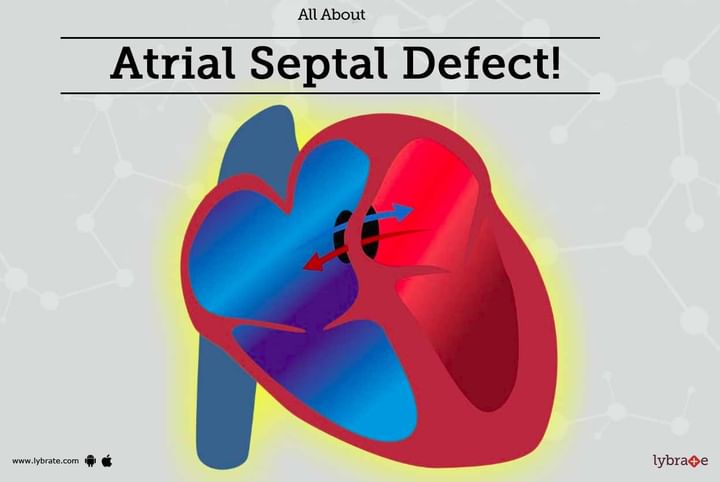All About Atrial Septal Defect!
An Atrial Septal Defect is present at birth (congenital heart disease). The condition refers to a hole in the septum or walls (atrial septum) that separate the heart’s upper chambers – atria.
The heart of the fetus develops during pregnancy. Normally, there are several openings in the septum dividing the atria, which close during pregnancy or soon after birth. However, a hole is formed if one of the openings does not close, leading to atrial septal defect.
Due to a hole in the heart, blood flows from left atrium to the right atrium and extra blood goes to the lungs.
When should you see a doctor?
Majority of atrial septal defect affected children are asymptomatic i.e. not having any symptoms. Only a few babies, especially in the first year of life, can show signs of heart failure if associated with other heart diseases.
It is possible that ASD will remain undetected until adulthood. The most common way to diagnose the condition is to have your doctor listen for a heart murmur while checking up with a stethoscope.
However, if ASD is not treated on time and progresses into adulthood then these problems can occur with time:
- Shortness of breath
- Heartbeat/rhythm disturbances in ECG
- Inability to participate in physically strenuous activities
- Heart palpitations
- A constant state of fatigue
- Stroke to mention a few
Diagnosis and Treatment-
If your doctor suspects your child of having Atrial Septal Defect, he/she will likely perform an X-ray or an ECG.
But for confirming the diagnosis, Pediatric Echocardiogram needs to be done from the chest of the child. This is a non-invasive test.
In bigger children or adolescents, sometimes echocardiogram from the chest is not possible as image quality is not good, in these cases; echocardiogram needs to be done from food pipe (esophagus) known as a transesophageal echocardiogram (TEE).
Treatment for ASD depends on – age of the child, size and location of the hole
There is no role of medications in ASD.
Paediatric cardiologist may recommend the following options –
1. Catheter Closure – Commonly known as ASD device closure (non-surgical closure of ASD by cardiac catheterization). This process involves positioning special devices called a septal occlude into the hole. The device prevents the flow of blood through the abnormal hole in the heart.
Only ostium secundum variety of ASD (OS-ASD) can be closed by this technique if ASD is having good margins around it.
Ideal time for closing the ASD is between 2-4 years of age.
2. Surgery – The surgeon may perform surgery to correct the defect if the hole has not closed by itself. The procedure is done under general anaesthesia. The surgeon sews the abnormal hole directly with a special patch or stitches. This needs to be done from the chest by open heart surgery. Other types of ASD like primum defect, sinus venosus defect closed by surgery.
Ideally, sinus venosus defects should be closed by 5 years of age.
Ostium primum defect if not associated with significant mitral regurgitation then should be closed by 2-4 years of age or else by 1-2 years of age.
All children diagnosed with an Atrial Septal Defect need special care under the guidance of a paediatric cardiologist.



+1.svg)
